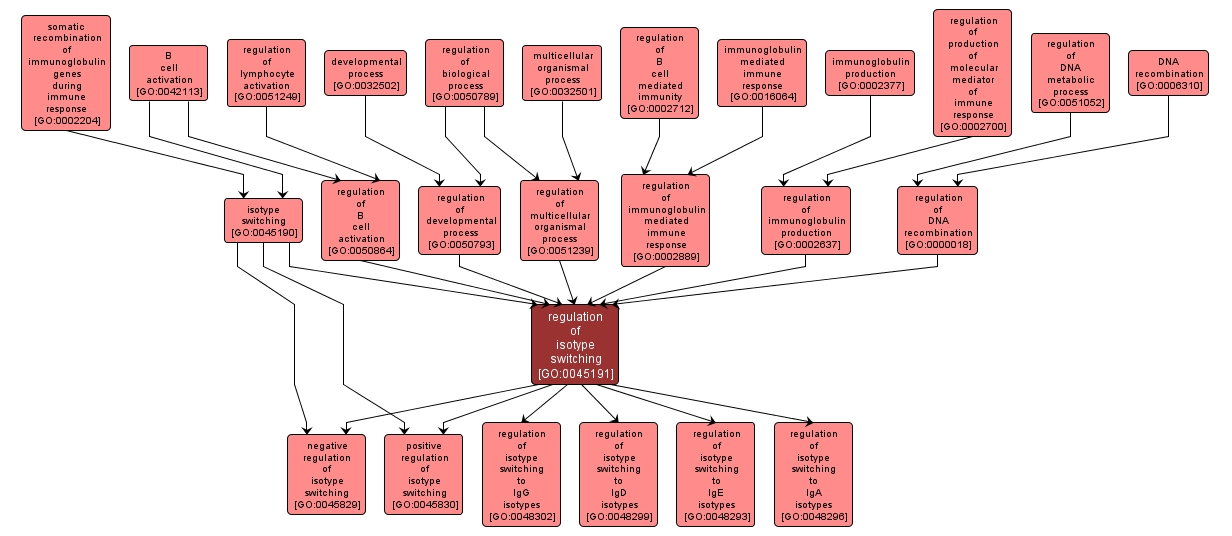GO TERM SUMMARY
|
| Name: |
regulation of isotype switching |
| Acc: |
GO:0045191 |
| Aspect: |
Biological Process |
| Desc: |
Any process that modulates the frequency, rate or extent of isotype switching. |
Synonyms:
- regulation of isotype switch recombination
- regulation of class switching
- regulation of class switch recombination
|
|

|
INTERACTIVE GO GRAPH
|














